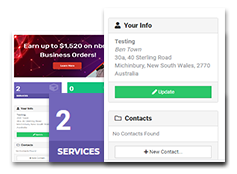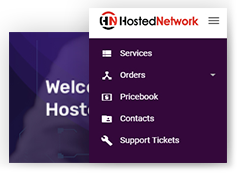Businesses that have already started their journey toward digital transformation by implementing cutting-edge technologies and building relevant competencies can fulfill rapidly evolving customer demands. Smart connected devices and cloud architecture are no longer a hype, but more of a reality. WFH and BYOD programs allow companies to monitor employee performance as well as ensure productivity whether at home or the office. Every individual and enterprise is interested in solutions that guarantee both performance and security for remote working. This is where Desktop-as-a-Service (DaaS) comes in.
DaaS is a form of Virtual Desktop Infrastructure (VDI) that a cloud service provider (CSP) hosts. There is a low upfront investment as the end-user follows a subscription-based pricing model while the CSP manages and maintains the server.
According to Future Market Insights, the DaaS market is likely to grow at a CAGR of 18% during 2019-2029. The proliferation of intelligent devices along with centralised IT largely contributes to the growth of the DaaS market. DaaS is a feasible, scalable, and agile option for companies looking to facilitate remote IT solutions. There is a low cost of entry and a quick return on investment, making it practical for SMBs. Companies that choose this route create a calculated remote work strategy that benefits them in the long run.
The following is a list of reasons why DaaS makes for the best option to deliver remote workspaces.
1. Improved Security
Security is a key aspect of every niche. Industries such as finance and healthcare can run operations with the knowledge that any user working remotely will only be able to access secure, encrypted portals. DaaS comes with built-in protection including strict access controls and multi-factor authentication (MFA). This ensures that off-site employees access corporate systems without putting sensitive data at risk. Also, DaaS vendors do not store data on a local device, hence eliminating the risk of unauthorised access or data theft.
2. Lower OpEx
With DaaS, the costs of deploying and maintaining the hardware that companies need to run each virtual desktop move from capital expenditures (CapEx) to operating expenses (OpEx). Companies only spend on cloud desktops when they launch, saving them time and money compared to on-premises VDI or traditional desktops. Collaborate with DaaS providers who offer on-demand access to cloud desktops with a variety of compute, storage, and memory resources.
3. Greater Accessibility
When it comes to DaaS, you transform your physical workspace into virtual desktops created on cloud servers that reside in remote data centers. Cloud-based DaaS provides information visibility, transparency, and accessibility to users so they can work efficiently. There are no limitations to the applications you can use on a virtual desktop, and a high-performance computing environment means you will not come across latency issues.
The experience is similar to working on physical desktops in the office while having access to the usual applications and programs. Examples include Office 365, email software, and CRM applications. Employees can access DaaS from any Internet-connected device regardless of the OS. It can be a desktop, laptop, Windows, Linux, Android, iOS, smartphone, or tablet.
4. Effortless Desktop Provisioning
DaaS brings up the concept of virtual desktops that are created on virtual machines in cloud solutions. All you need is a desktop management software that provisions virtual desktops instantly. You can even delete or turn these desktops off when they are idle. IT teams can group virtual desktops and assign them specific configurations as per department roles and functions. When working from home, a user can log off the VM and assign compute resources to another user, resulting in resource optimisation.
5. Seamless Collaboration
When you use a DaaS solution that you can combine with United Communications-as-a-Service (UCaaS), you revamp your entire IT infrastructure. This leads to better communications through virtual desktops, applications, and cloud storage that allow your teams to easily remain in contact. Lookup chat and video communication tools that you can leverage to check on progress. You can use these platforms to enable video meetings, instant messaging, and virtual events that instantly connect teams.
Conclusion
The benefits make DaaS a natural choice for businesses that want successful remote working. There is an increase in worldwide demand for this platform, so you should stay prepared by simplifying your desktop delivery strategy. Going for DaaS gives you peace of mind because all you have to do is invest on a monthly or yearly basis, and your vendor will manage everything else. You can then focus on achieving strategic business outcomes.
 Contact us
Contact us  Partner Login
Partner Login  Service Status
Service Status 


 November 10, 2020
November 10, 2020
 Raymond Viola
Raymond Viola
 3 min 30 sec
3 min 30 sec